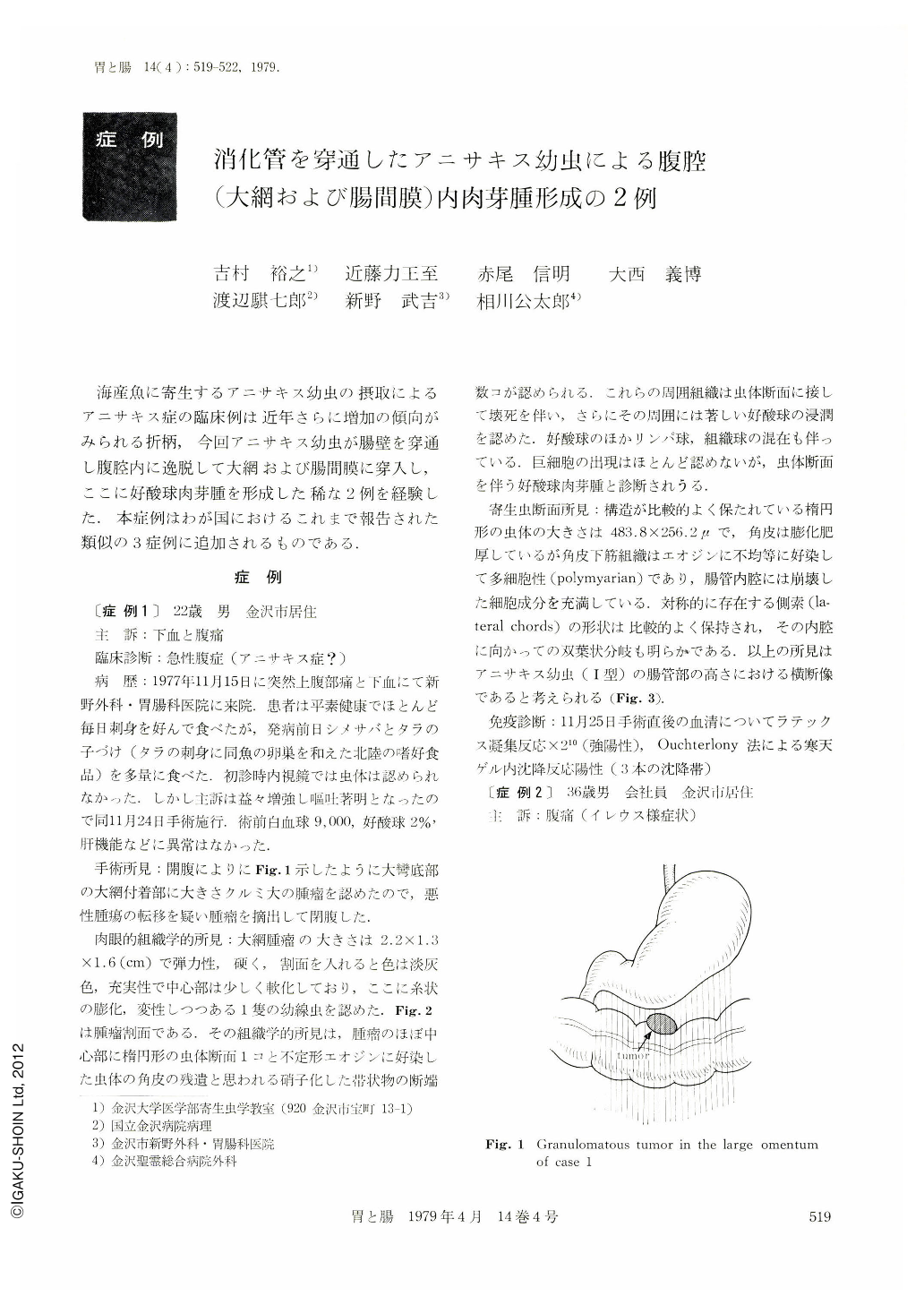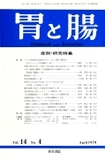Japanese
English
- 有料閲覧
- Abstract 文献概要
- 1ページ目 Look Inside
海産魚に寄生するアニサキス幼虫の摂取によるアニサキス症の臨床例は近年さらに増加の傾向がみられる折柄,今回アニサキス幼虫が腸壁を穿通し腹腔内に逸脱して大網および腸間膜に穿入し,ここに好酸球肉芽腫を形成した稀な2例を経験した.本症例はわが国におけるこれまで報告された類似の3症例に追加されるものである.
Clinicopathological investigations have been carried out on 71 cases of anisakiasis since the past three years from February 1975, as shown in Tables 1 and 2.
The present paper deals with two uncommon cases showing granulomatous tumors in the peritoneal tissues due to the penetration of Anisakis larva, coming out from the gastrointestinal lumen.
Case 1. A man aged 22 years. On the day before violent epigastralgia with tarry or bloody stool, the patient ate raw sea fish such as mackerel and cod. The abdominal symptoms markedly developed day after day. The surgical operation was done on the 9 th day from the onset. At laporatomy, a tumor of the size of a walnut was found on the large omentum near the large curvature of the stomach (Fig. 1). The tumor, measuring 2.2×1.3×1.6 cm, appeared to be the metastatic focus of the malignant neoplasm. On the cutting surface of the tumor, a somewhat disintegrated nematode larva was seen as in Figure 2. Histopathologically the eosinophilic granulation accompanied with marked edema and proliferation of the fibroblasts was seen surrounding the transverse section of Anisakis larva (Fig. 3). Latex agglutination was strongly positive and the precipitin bands by agar-gel diffusion (Ouchterlony) was also proved for Anisakis larvae antigen.
Case 2. A man aged 36 years complained of abdominal pain and tarry stool for 5 days after eating raw mackerel and tunny. The severe abdominal symptoms thereafter developed due to the repeated dishes of raw fish about 10 days from the occurrence of the sickness. At laporatomy, the terminal ileum was dark-red and markedly thickened (Fig. 4). The mesentery near the focus of the ileum was also dark-red and showed diffuse thickening such as the presumable tumor (Fig. 5). Histopathological findings of the foci of the ileum and mesentery involved were almost the same as those of case 1. Although no Anisakis larva was recognized in the eosinophilic phlegmon of the mesentery, the granulation was suspected to have possibly occurred by the invasion of the Anisakis larva. The positive reactions by Latex agglutination and precipitin test (Ouchterlony) would also support the evidence of extra-gastrointestinal Anisakis infestation.

Copyright © 1979, Igaku-Shoin Ltd. All rights reserved.


